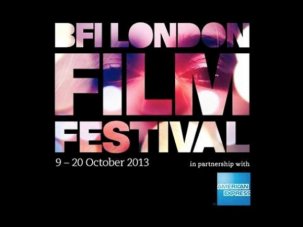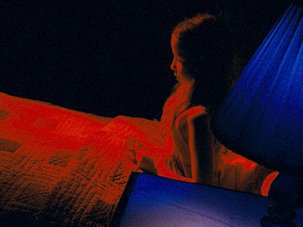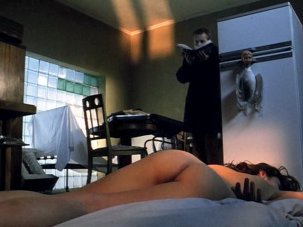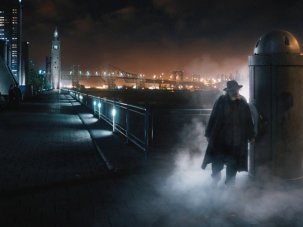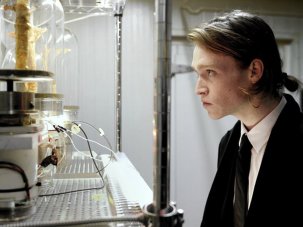Web exclusive
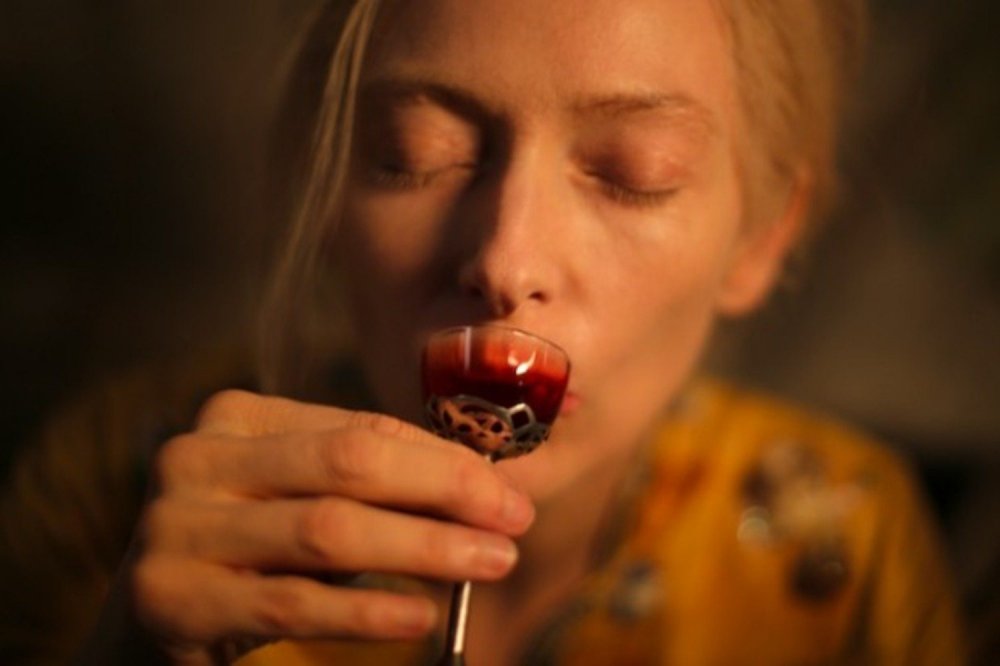
Only Lovers Left Alive
Anyone who attended a public screening at this year’s London Film Festival is likely to have seen the promotional video for the BFI’s upcoming ‘blockbuster’ Gothic season, shown before almost every film. Genre cinema thus continues its march to respectability; its rather peculiar pleasures can now be accommodated by the sometimes rarefied screening rooms of official cinephilia. By the same token, for the second year in a row the London Film Festival itself has a so-called Cult strand where devotees of horror, fantasy and SF – plus any other curious parties – can worship their beloved form without fear of ostracism or condemnation for their wayward tastes.
|
9-20 October 2013 | UK |
Even this organ got in on the act with the selection of Only Lovers Left Alive for the festival’s Sight & Sound gala presentation. Genuine cult director Jim Jarmusch, who has previously brought a hip existential edge to the forms of the western (Dead Man), the martial-arts flick (Ghost Dog) and the conspiracy thriller (The Limits of Control), here weds vampire tropes and gothic comedy to present a long, long view on history, as well as a mordantly witty alternative rewriting of human endeavour. Tilda Swinton and Tom Hiddleston may be decadent blood drinkers, but it is we mortals who are both mindless ‘zombies’ and a plague upon the world, while they are the keepers, curators and even contributors of an underground culture which – Jarmusch suggests – will always flourish best in the shadows. The irony is that this may well be the most crowd-pleasing film that Jarmusch has yet brought into the light.
Indeed, many films in the Cult strand came with a heavily foregrounded meta-cinematic layer to them, not least amongst them Frank Pavich’s documentary about the greatest cult film ever not to have been made, Jodorowsky’s Dune (which I sadly couldn’t see).

Rigor Mortis
A very different kind of meta-cinema, though, was on offer in Juno Mak’s feature debut Rigor Mortis, in which a one-time movie star (Chin Siu-ho) goes to an old, brutalist apartment block to commit suicide, only to find himself embroiled in a scenario involving the ghosts, vampires and black magic of the past – while sharing space with several original cast members of the 1980s series Mr Vampire. It’s an elegantly realised revitalisation of a lost mode of Hong Kong horror, with loss itself, as well as cinema’s special power to preserve and even resurrect the dead, key to its elegantly eerie impact.
The Congress, Ari Folman’s follow-up to Waltz with Bashir (2008), imagines a future in which all actors have been reduced to manipulable digital data, and explores the cost imposed upon our sense of history and identity by a virtual world where the image rules and desires are instantly – if emptily – fulfilled. Robin Wright gives a career-best performance as (several versions of) herself in a lysergic, mostly animated set of landscapes and scenarios that both allegorise and obscure our own very real relationship with the mythopoeic world of cinema (from which this film quotes with relentless postmodern glee) and of the internet.

The Zero Theorem
Terry Gilliam’s The Zero Theorem plays a similar game, but despite looking forward to a future where all gratification is constructed and corporatised, it hardly seems an advance, in filmmaking terms, on the broadly drawn steampunk dystopia of his frankly better Brazil (1985). Not unlike his film’s cypher-like hero Qohen Leth (Christoph Waltz), Gilliam appears to have become trapped in the loop of his own fantasy – although, as fantasies go, it is a good one, dark and despairing precisely because of its awareness that any hope is just part of the illusion.
Perhaps, though, the most meta-cinematic of all is Sono Sion’s uproarious Why Don’t You Play in Hell? which, by bringing a guerrilla film crew (the ‘Fuck Bombers’) into collision with an ultra-gory yakuza war, becomes its own madcap making-of film. A deliriously gaudy celebration of the decline of everything (including Japanese cinema, film as a medium, and any notion of good taste), it plays like the improbable bastard offspring of Cinema Paradiso (1988) and Kill Bill (2003) – and if its characters are all searching for an irrecoverable past, any sense of nostalgic melancholy is covered over by the anarchy and energy of Sono’s hilariously surreal plotting.

Why Don’t You Play in Hell?
Cameras also feature in Ti West’s thriller The Sacrament. Immersing a small group of Vice journalists into the jungle-girt utopian cult of Eden Paradise, the film goes all Cannibal Holocaust (1980) on its rapidly evolving situation, leaving us to wonder how much the presence of the media has contributed to the horrifically tragic outcome.
Strong performances and a careful building of tension elevate this above the festival’s other ‘found-footage’ feature, the feminist(-ish) ghost story SX_Tape, which comes with a distinct lack of economy and little to distinguish it in the already overcrowded ‘shakicam’ market, other than its being helmed by the usually more interesting Bernard Rose (Paperhouse, Candyman and sundry Tolstoy adaptations).
Similarly subpar is Eugenio Mira’s daft potboiler Grand Piano. Much as concert pianist Tom Selznick (Elijah Wood) must play an ‘impossible’ piece without error to prevent a mysterious gunman murdering both him and his beloved wife, there is considerable virtuosity here in the execution of the cinematography and set design – but the pleasures are chiefly of a technical nature, with the screenplay too contrived to engage.
Lucky McKee and Chris Sivertson’s All Cheerleaders Die is a black(-magic) comedy of female rites of passage and teenage witchery. Reworked not only from their own little-seen 2001 video film of the same name but also from Heathers (1988), Buffy the Vampire Slayer (1992), The Craft (1996), Teeth (2007) and Jennifer’s Body (2009), it unfortunately falls under the shadow of the similar but altogether smarter Detention (2011).
And while Adam Wimpenny’s debut Blackwood ingeniously overturns the creaky conventions of the haunted-house movie, by the end it has over-explained its own trickery to a point where there is little room left for the uncanny to come out and play.
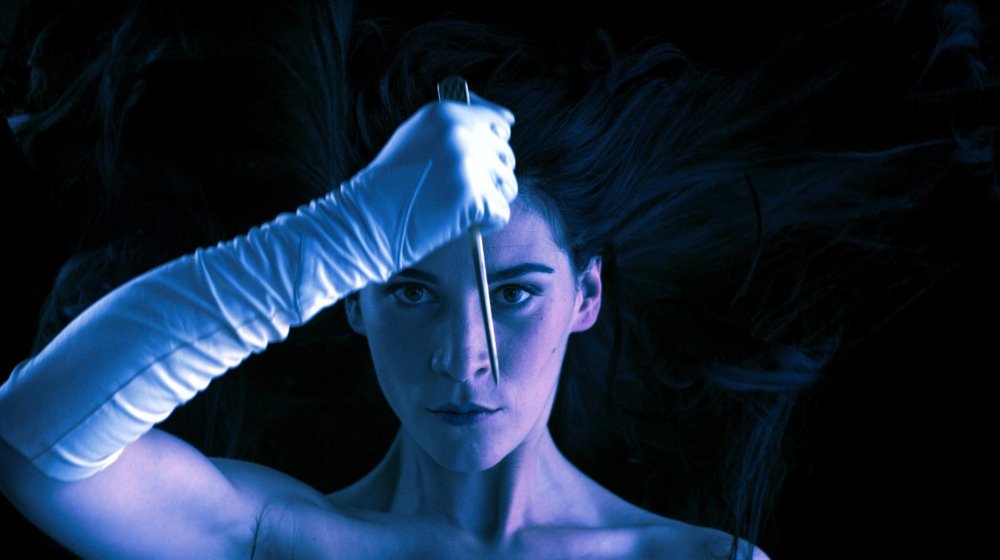
The Strange Colour of Your Body’s Tears
‘Cult’ is an epithet that movies usually have to earn over time, yet there was one title in this year’s selection whose niche appeal and hallucinatory convolutions practically guarantee it an instant place in the hearts and minds of its target audience, while also demanding the sort of repeat viewings that come to define a classic.
A follow-up and companion piece to Amer (2009), though in fact written before it, Bruno Forzani and Hélène Cattet’s The Strange Colour of Your Body’s Tears is a kaleidoscopic, synaesthetic psychodrama tuned to the key of giallo. Its title is an evocative mash-up of The Strange Vice of Mrs Wardh (1971), All the Colours of the Dark (1971) and What Are Those Strange Drops of Blood on Jennifer’s Body? (1972), its soundtrack has been reappropriated from various Italian thrillers of the 70s and 80s and its motifs are familiar from the works of Bava, Argento, Fulci, Martino and others.
Yet all these touchstones have been reconstituted into a beautiful, intriguing trip through the labyrinth of a man’s disturbed, gynophobic mind – a labyrinth for which the filmmakers fashion both visual and narrative analogues, in the winding staircases and hidden passageways of the Art Nouveau apartment building from which the wife of Dan Kristensen (Klaus Tange) has mysteriously gone missing, and in the film’s intricate Chinese-box structure of stories-within-stories and nightmares-within-nightmares. As Dan finds himself all at once victim and voyeur, detective and killer, he is forced to find his way back to the bloody primal scene that is the key to all his errant fears and desires.
Formally experimental, headily disorienting and an aesthete’s wet dream, The Strange Colour of Your Body’s Tears is a schizophrenic blend of arthouse and charnelhouse.
-
The Digital Edition and Archive quick link
Log in here to your digital edition and archive subscription, take a look at the packages on offer and buy a subscription.




